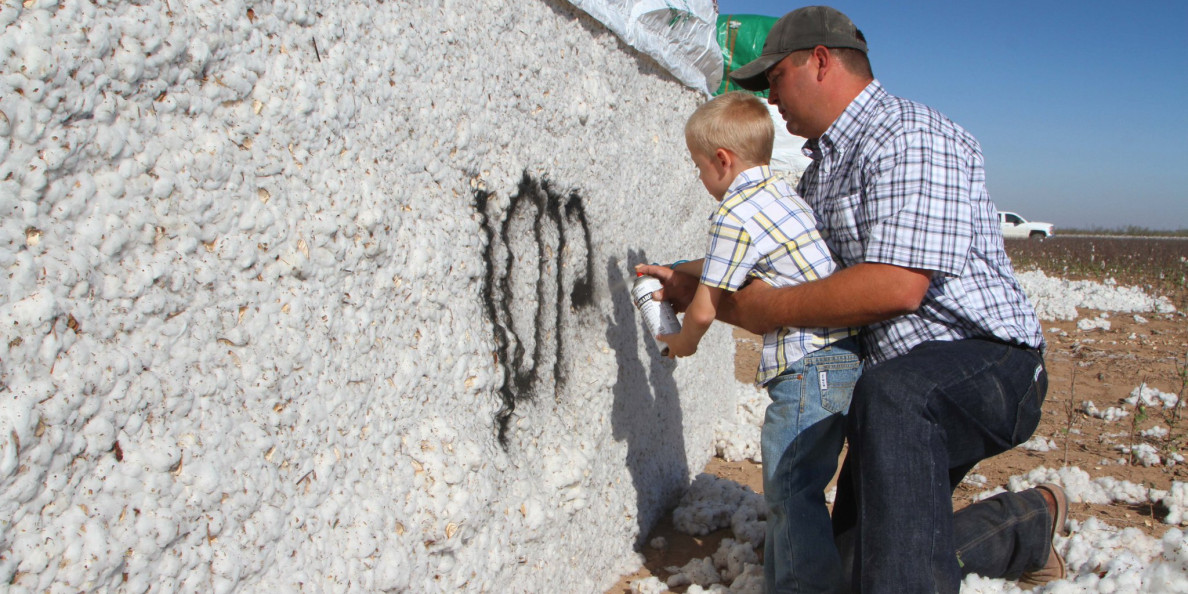It’s been several days since our last market commentary, but with the market settling into a very narrow trading range of 67 to 69 cents, there has been little to talk about. Considering the thrills and spills we’ve experienced over the past few months watching this crop champion everything Mother Nature could throw at, a little calm in the market is welcomed. Even Wednesday’s significant midday gains brought on by yet another developing tropical storm in the Gulf couldn’t be sustained. December futures up over 200 points midday slipped back to close at 68.80. Nevertheless, to hold firm in a range at such a lofty level in spite of a potential huge crop, both here and abroad, suggests that there is underlying support and strengthening demand appears to be the stimulus. Otherwise, cotton prices could easily be chasing the low 60’s in search of a bottom.
Perplexing as it’s been all season, determining the size of our domestic crop is still a work in progress. Conservative estimates have Hurricane Harvey and Irma combining to destroy a million and half bales. If that isn’t enough, a new tropical disturbance soon to be named Nate is predicted to follow a track through the Southeast where a tremendous number of cotton acres lay in its path. Regrettably, this cotton couldn’t be in a more vulnerable stage whereby Nate could inflict much more damage than Irma. This one bears watching carefully.
Moving westward, the potentially huge crop in Texas is also now in jeopardy. In traveling the area this week, it’s quite apparent recent heavy rains and cloudy conditions have taken a toll on the earliest cotton. Hard locked and rotten bolls are very prevalent and will certainly contribute to quality losses if not yield, to some degree. The big question lies in the fate of their late cotton which makes up the bulk of the crop. This later cotton has tremendous potential. I’ve seen dryland fields this week capable of producing in excess of two bales. To do so, however, sunshine and heat going forward will be vital. Weather forecasters are calling for temperatures next week to only reach highs in the 60’s and lows to dip into the 40’s, neither of which are conducive to maturing cotton. The estimated ten million bale Texas crop will rest largely on the ability to carry all this late cotton to harvest.
Of one thing we can be certain, demand is our friend and it seems to be strengthening as seen by several indicators. The biggest of these is in China, where their reserve auction came to a close last week with another 14.8 million bales now depleted from their once large stockpile. It appears their hunger for cotton is greater than once thought. For this offtake, plus current imports, exceed that necessary to fill their production gap. Also, for the past two weeks we’ve heard more and more talk from within China that they will initiate moves to increase their reserves once again. This could lead to even larger U.S. exports into the country. In addition, demand in other parts of the world is favorable as seen by weekly export sales which continue to keep us well ahead of pace to meet USDA export estimates.
Looking forward, don’t be surprised to see prices edge slightly lower as harvest begins in earnest, unless weather conditions further weaken the crop. Then again, as the dust settles behind pickers and strippers, demand will be a driving supportive force for cotton prices as the New Year approaches.
Until next time,
Πηγή: Choice Cotton

